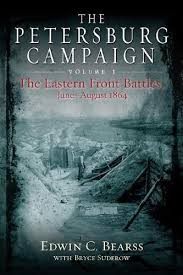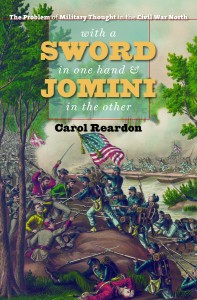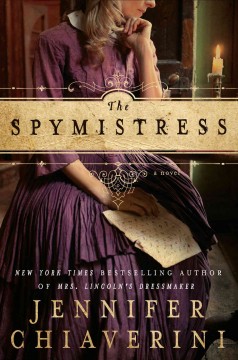
Edwin C. Bearss and Bryce A. Suderow
Savas Beatie, 434 Pages, 2012
ISBN: 978-1-61121-090-3
Image courtesy of Brett Schulte
The annals of Civil War study tend to look towards the beginning of the war until the fateful days in July at Gettysburg and Vicksburg. There is no doubt that most written works surround themselves around those campaigns before the apex of the Union and the downfall of the Confederacy. The study of the war past those fateful campaigns are less looked at but no more. Ed Bearss and Bryce Suderow have brought to light something quite different in the study of the Petersburg Campaign, the longest running siege in the Civil War.
Edwin Bearss is one of the most respected Civil War historians of our age and got his start at the Vicksburg National Military Park. From there, he has stretched himself all around the Civil War world as an authority on the campaigns and the people. A Marine who has served in World War II, he was severely wounded in the Pacific. From 1981 to 1994, he served as Chief Historian to the National Park Service and has authored many works and was pivotal to raising the USS Cairo. Bryce Suderow is a Civil War writer and researcher and has published many articles and is considered one of the finest archivists in the country. If it were not for Suderow, this work might never have come to light.
Ed Bearss was approached to write essays about the battles during the Petersburg Campaign for use of the park service in Virginia. This work is the collection of essays he wrote concerning the battles of the eastern front during the campaign. Keeping in mind that these essays were written for the guides at Petersburg National Military Park, Bearss does not waste any time giving the introductions for the people involved in the battle. He jumps right into the story assuming that the reader knows something about them already. Suderow, however, gives some introduction as to what was going on and what had happened. One of the helpful things in the narrative is the breakaway which sometimes happens. During the narrative of Bearss and his essays, Suderow sometimes interrupts and fills the reader in as to what is going on. This is helpful for the readers who are not as well versed in the war after the summer of 1863. This lack of introduction makes it seem as though the book is not an easy read and that is wrong. Though Bearss spends no time telling you the background of the people and regiments who are fighting the battle, there is no need to have that information because of the narrative. Bearss writing style is such that he allows the narrative to bring you into the time of battle not focusing on the past of the people in play.
The Petersburg Campaign, Volume I: Eastern Front Battles, is something which should be on the shelves of every Civil War Historian or enthusiast. Both the narratives of Bearss and the editorials of Suderow bring to light many engagements about the Petersburg Campaign which are generally ignored. The annals of Civil War history will be grateful for what has been done here in this book, and the coming volume. The combination of Bearss and Suderow should be praised for the work they have done. What was first as set of essays for use at the Petersburg National Military Park for park use is now printed for the public so that they may know the detail of the events not usually written about in the standard history book on the Civil War.
Matthew Bartlett - Author, Gettysburg Chronicle



 RSS Feed
RSS Feed
